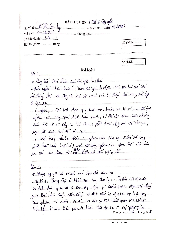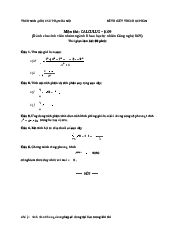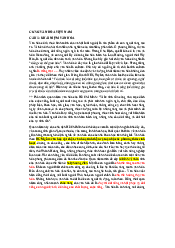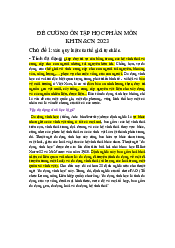

Preview text:
Ho Chi Minh University of Foreign Languages and Information Technology.
Nguyễn Thành Tiến-21DH715037
TOPIC: ENVIRONMENT AND PEOPLE’S RESPONSIBILITIES. Introduction: Introducing the topic.
What is environment, environment can be defined as a total of all the living and non-
living elements and their influence human life such as animals and nature elements include
water, land, rocks, air, and more over.
Because of the importance effects of environmental influence in human life, that is why
people must take responsibility for protecting the environment, also protecting the future of the next generation.
To demonstrate more details. I will divide a subject into three main questions: How
important of the environment to human, why human must take responsibility for environmental
pollution, and final is What human should do to help environment. Body: 1/
The first question is how important the environment is to human, and I will give some
reasons why it is important. The first reason is we are from the environment, the environment is
very important for everyone’s life, because life on earth is possible only from the environment.
All human beings, animals, trees and plants, weather, climate is all contained within the
environment. The environment not only works to maintain balance in the climate, but also
provides all the things necessary for life.
The second reason is many diseases come from the environment.
About 60% of human infections originate from animals. Covid-19 is most likely a
zoonotic disease though we aren’t sure what animal it came from while diseases like bird and
swine flu also come from animals. The Bubonic plague, which wiped out 1/3 of Europe, came
from a bacteria carried by a flea and spread by rats. Making sure humans have enough separation
from animals protects our health. 2/
We move to the next question is why humans must take responsibility for environmental
pollution, if you want to know why humans must take responsibility for this, in this part I will
tell you what human impacts on the environment. Humans impact the physical environment in
many ways: overpopulation, pollution, burning fossil fuels, and deforestation.
Water pollution is the contamination(nhiễm bệnh) of bodies of water, such as lakes,
rivers, and oceans. It can be caused by a variety of things, including discharges from factories
and wastewater treatment plants, and plastic waste from fishing nets in the ocean. The different
types of water pollution can have a devastating(tàn phá) effect on the environment and on human
health. It can cause problems with the quality of drinking water, which can lead to water
scarcity(khan hiếm) when the water is unsafe to drink. It can lead to the spread of disease, as
contaminated water can contain harmful bacteria. That is why humans must take responsibility
for environmental pollution, and take responsibility for their health.
Air pollution is a broad term that refers to the many different chemicals and particles that
can be found in the air. These pollutants can come from a variety of sources, including cars,
factories, power plants, and even outdoor fires. The most common type of air pollution is caused
by burning fossil fuels, such as coal, oil, and natural gas.
I will show you the pie chart display how different sources pollute the air in a certain city.
Overall, 85% of the city is polluted due to vehicles and factories. Vehicles create the highest
pollution. They cause 45% air pollution. It means that almost half of the pollution is created by
vehicles. The second highest pollution is created by factories. They account for 40%. Then
comes cooking and domestic activities which cause 7% of air pollution. Railway engines and
brickfields equally cause 6% of air pollution. The least air pollution is generated by powerhouses: only 2%. 3/
The last question is what humans should do to help the environment. If each individual
realizes how important of environment, it will reduce a lot of environmental problems. So, I’m
very pleasure to share with you some tips you should give to help the environment.
Bike to work, if more people commuted on bike instead of car, experts estimate we could
reduce greenhouse gas emissions by 11 percent by 2050. One study found that half of all car trips
were less than 3 miles. Given the short distance, cycling or walking could easily substitute for 41
percent of these trips, saving nearly 5 percent in carbon emissions.
Save the environment by using less packaging. Disposable plates, plastic forks, and
ketchup packets are small but add up. Food packaging and containers create 39 million tons of
waste annually — nearly one-quarter of solid waste produced in the United States. Many of those
containers end up in landfills, releasing more methane into the air. The good news is that many
companies are becoming more aware of how much food packaging they use and taking steps to
reduce it. Individuals can pitch in, too. Conclusion:
In sum, Saving the planet seems like an impossible task. However, we all should be
responsible enough for the ever-increasing environmental pollution or else it may be difficult for
future generations to even survive on this planet. Better methods such as the use of solar energy,
wind energy and other ecologically safe technologies can surely be considered an alternative to
live in a healthy and pollution-free environment. And this is the end of my presentation, thank everyone for listening to me.




